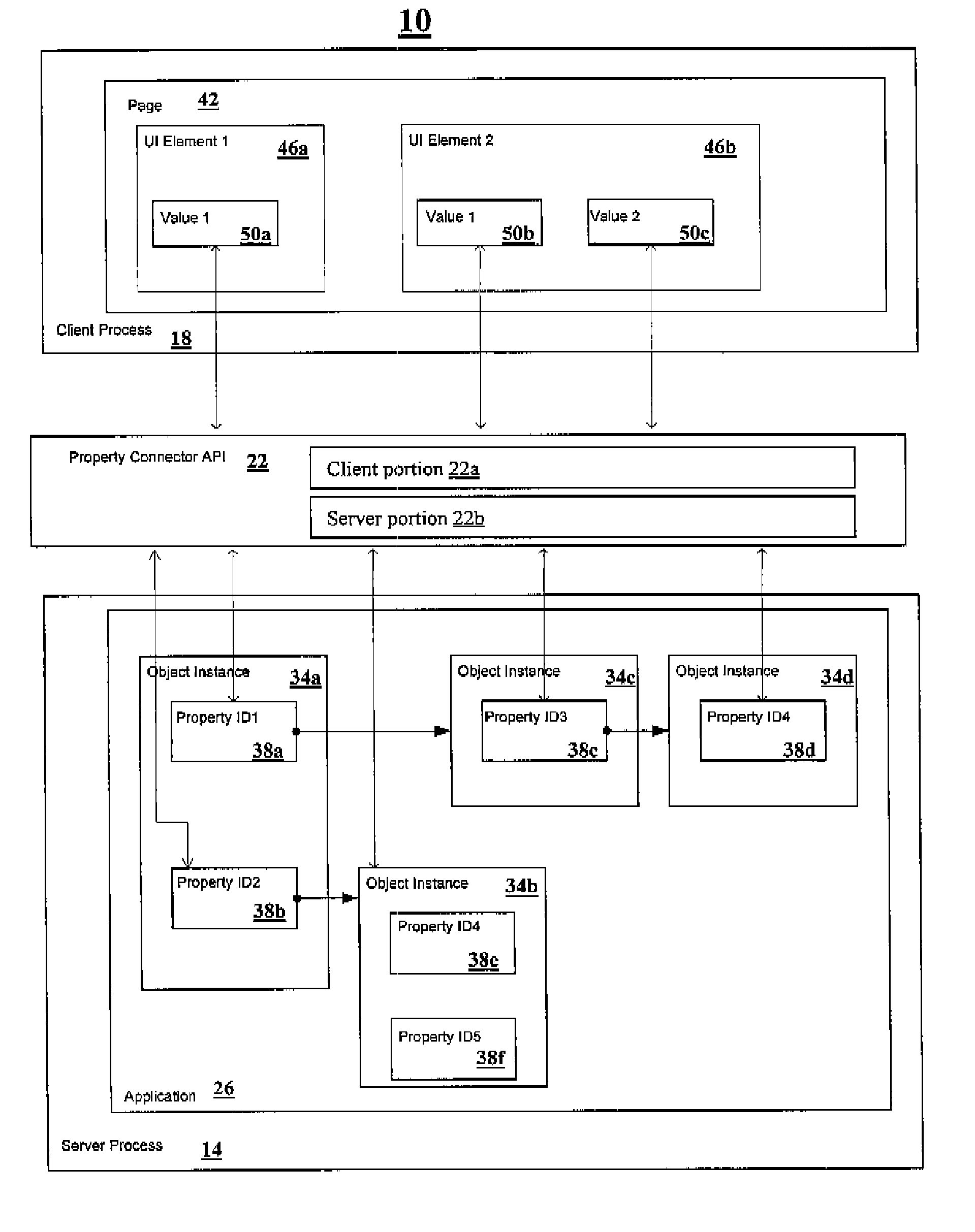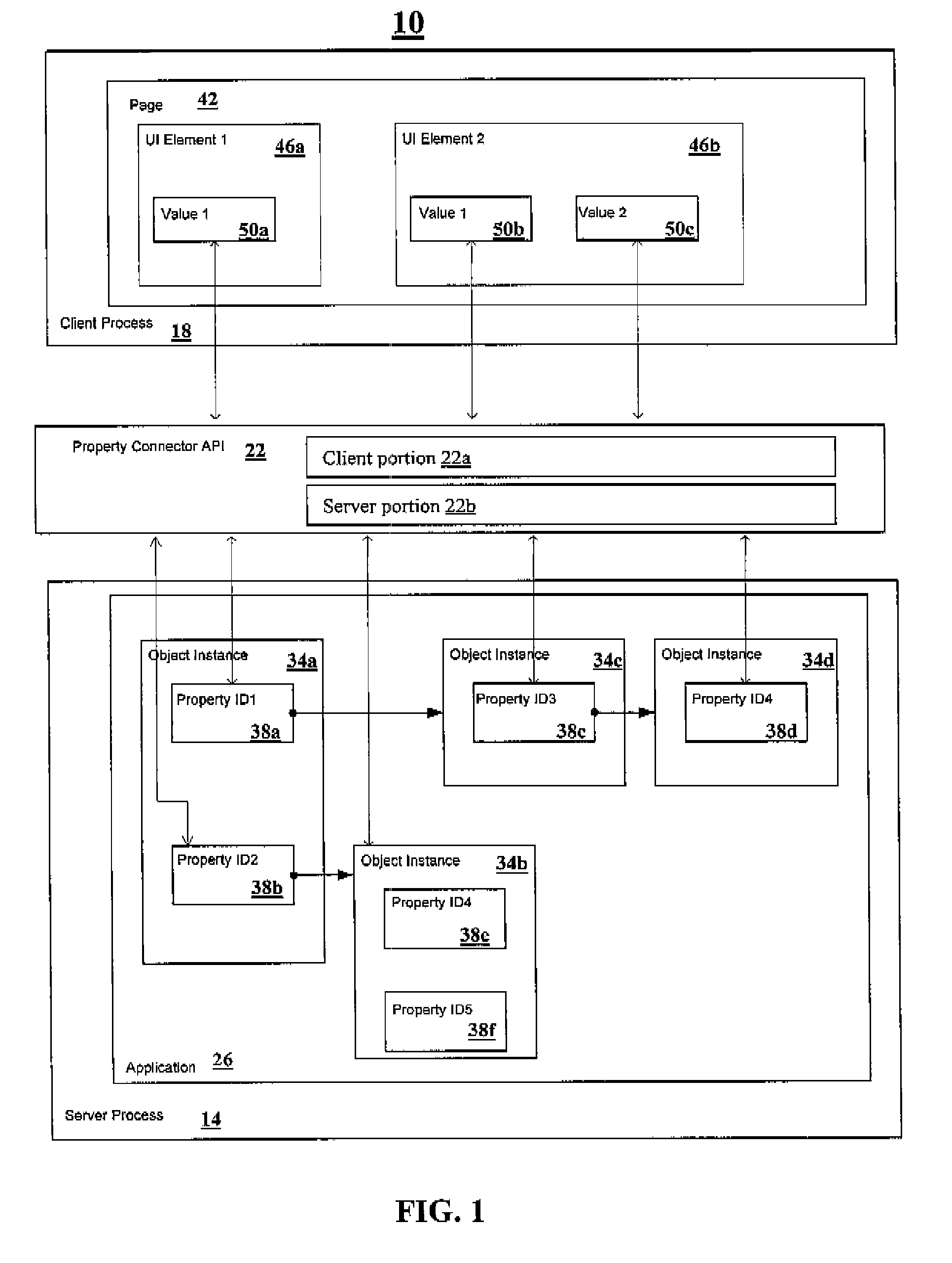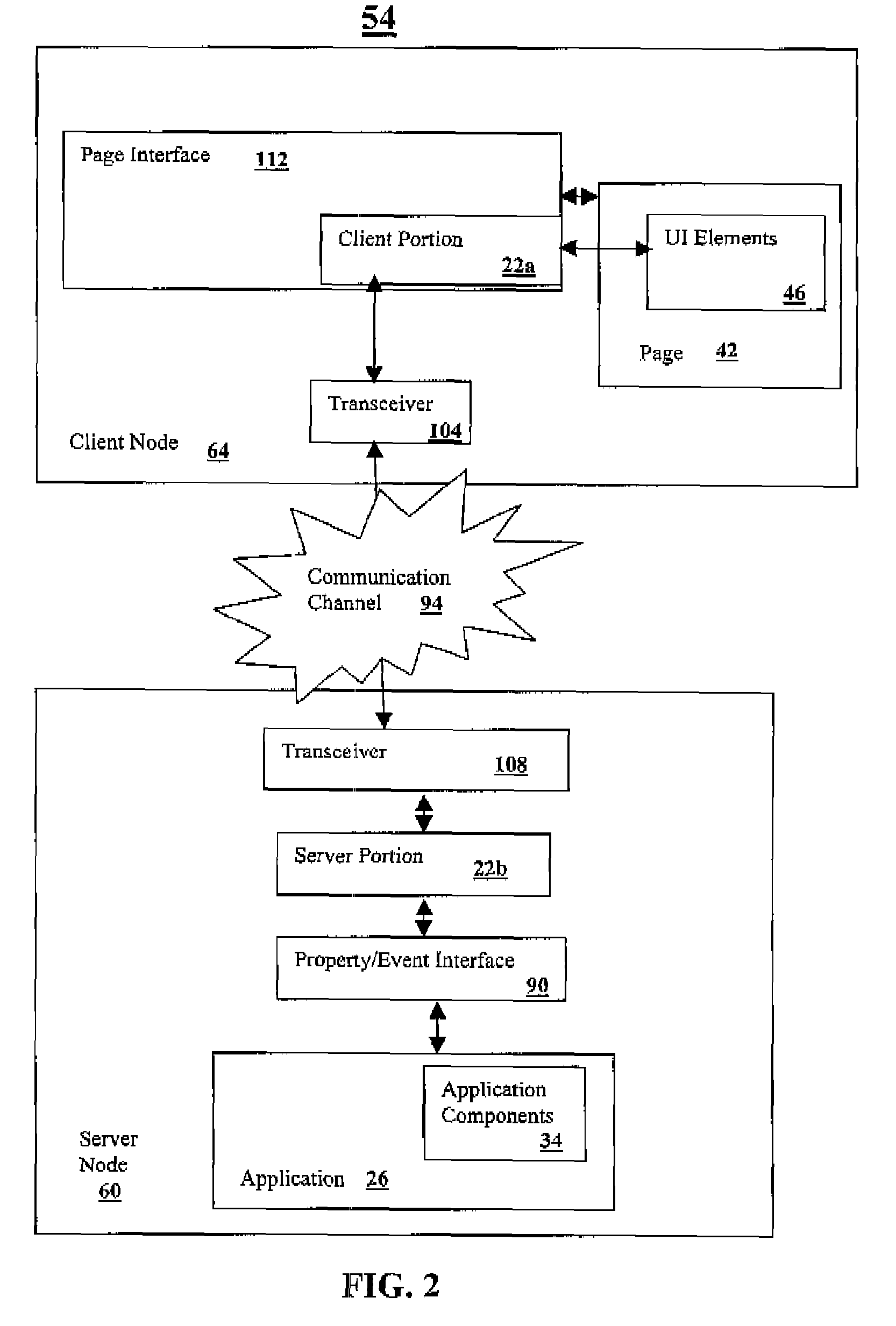Methods and apparatus for communicating changes between a user-interface and an executing application, using property paths
a technology of user interface and executing application, applied in the field of client server networks, can solve the problems of exacerbated administrative burden on network administrators, limited number of applications a given client is able to execute, complex development and maintenance of applications built this way, etc., and achieve the effect of relatively straightforward design of the user interactive portion of the application
- Summary
- Abstract
- Description
- Claims
- Application Information
AI Technical Summary
Benefits of technology
Problems solved by technology
Method used
Image
Examples
Embodiment Construction
[0049]FIG. 1 depicts a block diagram of an embodiment of a system 10 for communicating changes between a user-interface and an executing application, using property paths. The system 10 includes a server process 14, a client process 18 and a property connector API 22. The server process 14, the client process 18 and the property connector API 22 can be located on a single computing device or distributed among several computing devices. The server process 14 includes an application 26 with application components 34a, 34b, 34c and 34d (generally 34). In this embodiment, the application components 34a, 34b, 34c and 34d are instances of objects that the application 26 generates.
[0050]Each of the application components 34a, 34b, 34c and 34d includes zero or more properties 38a, 38b, 38c, 38d, 38e and 38f (generally 38). This embodiment includes two types of properties. A first type of properties 38, for example, 38d, 38e and 38f, have a value for a specific variable. A second type of pro...
PUM
 Login to View More
Login to View More Abstract
Description
Claims
Application Information
 Login to View More
Login to View More - R&D
- Intellectual Property
- Life Sciences
- Materials
- Tech Scout
- Unparalleled Data Quality
- Higher Quality Content
- 60% Fewer Hallucinations
Browse by: Latest US Patents, China's latest patents, Technical Efficacy Thesaurus, Application Domain, Technology Topic, Popular Technical Reports.
© 2025 PatSnap. All rights reserved.Legal|Privacy policy|Modern Slavery Act Transparency Statement|Sitemap|About US| Contact US: help@patsnap.com



